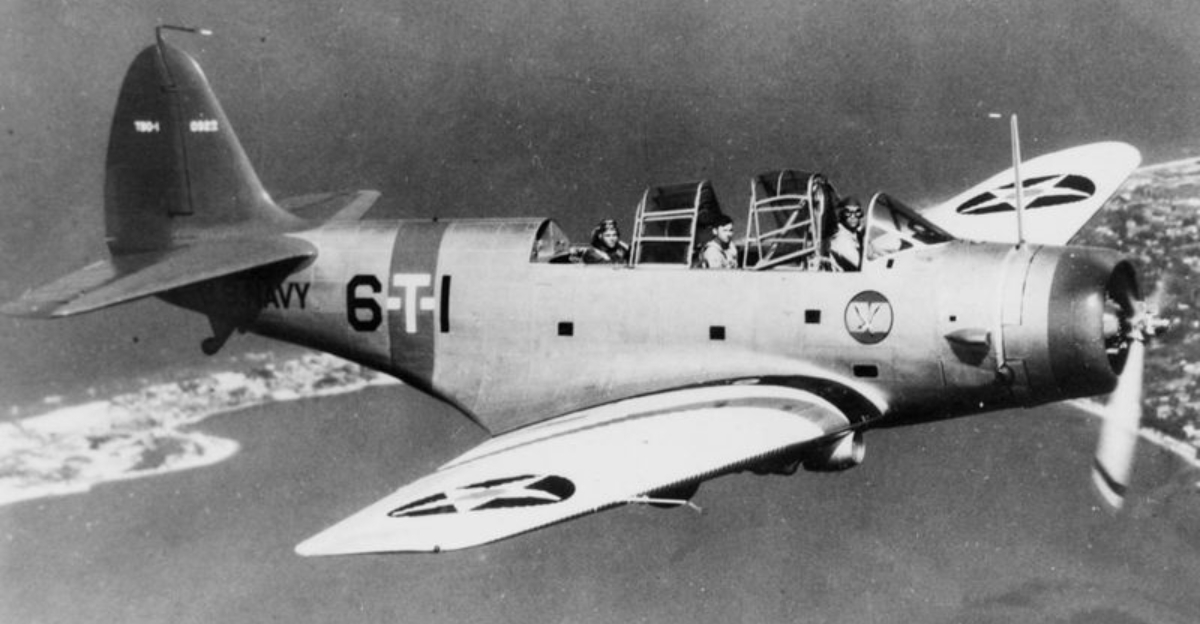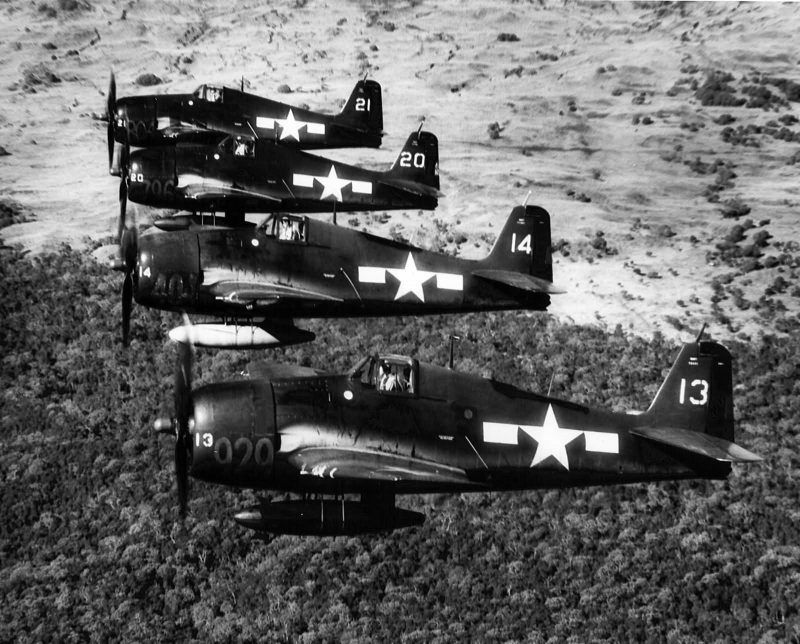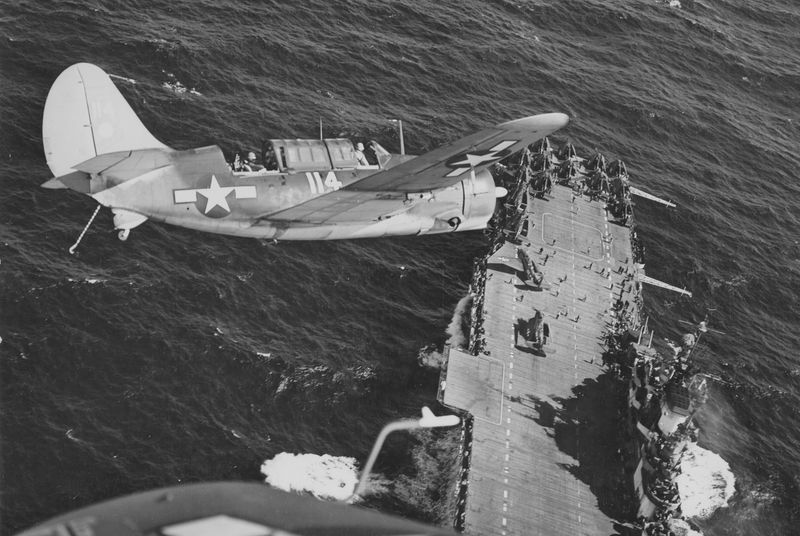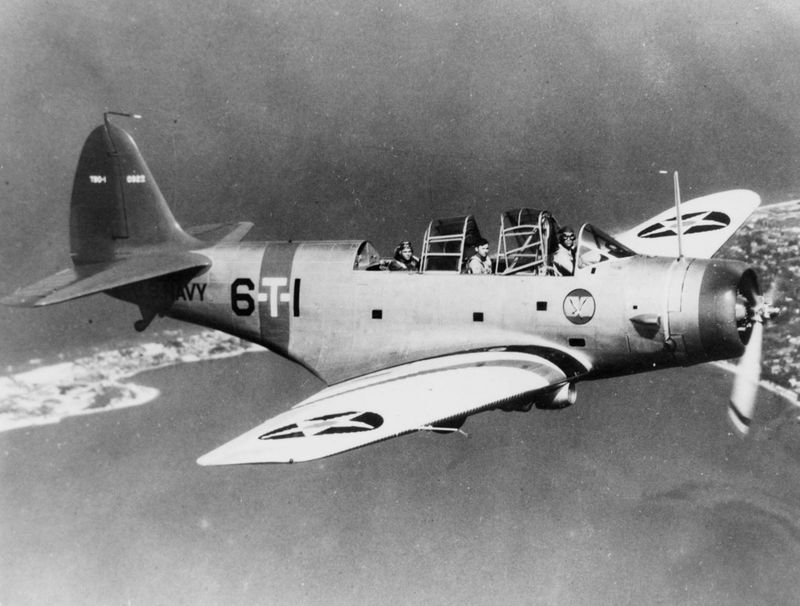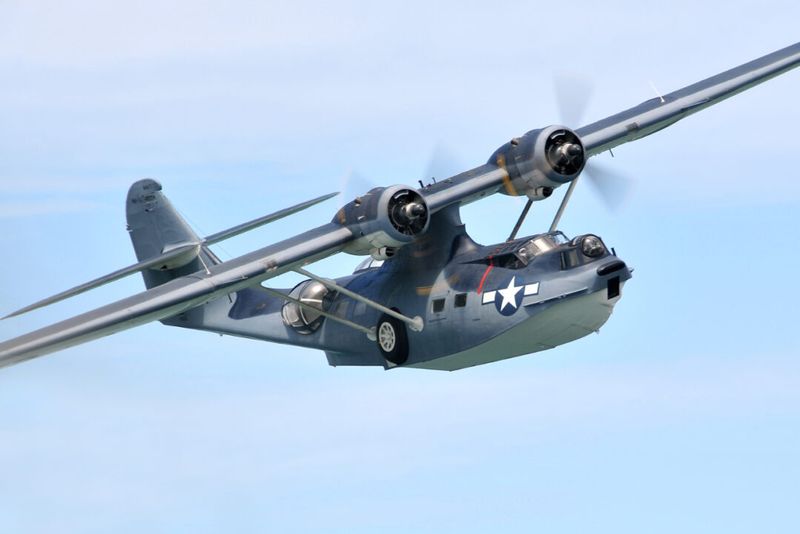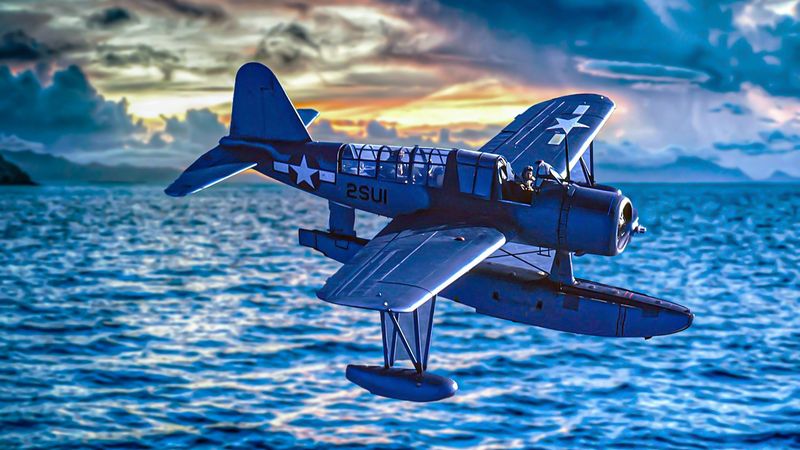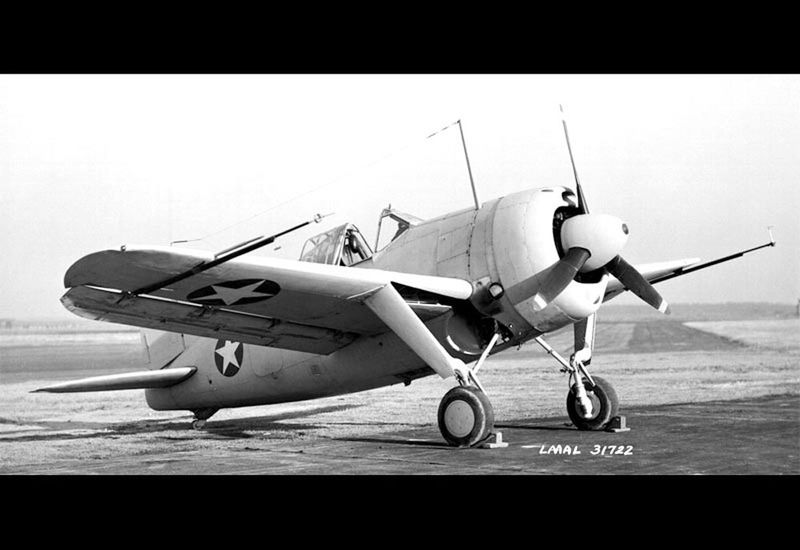Explore the ten remarkable aircraft that played pivotal roles in World War II, yet often remain overshadowed in the annals of military history. These planes did more than just fly; they were the wings upon which victory soared in the Pacific and beyond. From dogfights to daring raids, each aircraft holds a unique story and legacy.
1. Grumman F6F Hellcat
With its dynamic power and robust airframe, the Grumman F6F Hellcat became a legend in the sky. This rugged carrier fighter was an ace-maker, accounting for over 5,000 enemy kills. Its combination of firepower, durability, and ease of maintenance made it the Navy’s top-scoring fighter.
Pilots appreciated its forgiving nature during takeoffs and landings, crucial under the pressure of combat. The Hellcat could take a punch and deliver a knockout blow, often returning from missions with damage that would ground lesser planes.
It was the unsung hero of the Pacific, silent but deadly.
2. Grumman TBF/TBM Avenger
The Grumman TBF/TBM Avenger was more than just a torpedo bomber; it was a lifeline for its crew. With a three-man team, radar system, and hefty bomb load, the Avenger was a versatile powerhouse of the skies.
Future President George H.W. Bush famously piloted this plane, showcasing its importance and reliability in combat. The Avenger’s robust design allowed it to survive heavy damage, returning crews safely to their carriers.
While its size made it a challenging target, its capabilities made it a formidable opponent in naval warfare. The Avenger was a steadfast guardian in turbulent times.
3. Curtiss SB2C Helldiver
The Curtiss SB2C Helldiver was known for its striking dive-bombing capabilities, succeeding where others faltered. Despite its reputation for being tricky to land, its ability to deliver larger payloads made it a lethal force in strike roles.
Pilots needed skill and precision to master the Helldiver, but those who did found it an invaluable asset. Its powerful engines and sturdy construction allowed it to withstand intense combat conditions.
The Helldiver’s role in crippling enemy forces solidified its place in history as a fearsome aerial weapon, despite its challenging nature.
4. Grumman F4F Wildcat
In the early days of World War II, the Grumman F4F Wildcat was the Navy’s indomitable workhorse. Despite being outclassed in speed by enemy fighters, it held its own through superior tactics and rugged construction.
Pilots learned to leverage the Wildcat’s strengths, using its durability to survive engagements that would down faster planes. Its compact design made it a nimble and resilient fighter.
With a spirit as unyielding as its frame, the Wildcat proved that sheer willpower and tactical brilliance could triumph over technological disadvantage.
5. Douglas TBD Devastator
The Douglas TBD Devastator was a pioneer as the first all-metal U.S. torpedo bomber, setting the stage for future innovations. Despite its poor performance at Midway, it taught vital lessons that spurred advancements in aircraft design.
Its sleek, metallic structure was a symbol of a bygone era, where bravery sometimes exceeded capability. Though outpaced by subsequent developments, the Devastator’s legacy lies in its impact on tactical evolution.
This aircraft embodied the transition from old to new, marking a crucial pivot in naval aviation history.
6. Consolidated PBY Catalina
The Consolidated PBY Catalina was more than an aircraft; it was a lifeline over vast ocean expanses. Known for its versatility, this patrol flying-boat was crucial for reconnaissance, anti-submarine patrols, and dramatic air-sea rescues.
With its wide wingspan and amphibious capabilities, the Catalina could land on water, making it invaluable for long-range missions. Its role in search and rescue operations saved countless lives, cementing its place in history.
This aircraft’s gentle yet formidable presence turned the tides of warfare, proving that versatility could be as powerful as weaponry.
7. Vought OS2U Kingfisher
The Vought OS2U Kingfisher was a watchful sentinel, guiding fleets through perilous waters. As a scout floatplane launched from battleships and cruisers, it played a vital role in spotting both enemy ships and downed airmen.
Its compact design allowed for nimble maneuverability, essential for scouting missions under fire. The Kingfisher’s reliability made it a trusted companion to larger naval vessels.
With a steadfast presence, this aircraft provided critical intelligence, proving that sometimes the smallest components have the most significant impact.
8. Brewster F2A Buffalo
The Brewster F2A Buffalo may not have been the fastest, but it was a tenacious fighter during its time. Early in the war, it quickly found itself outclassed, yet in the Aleutians and during the defense of Wake, it provided crucial cover.
Its lightweight design allowed for surprising agility, a trait pilots used to their advantage in hostile environments. Despite its shortcomings, the Buffalo’s presence offered a morale boost to frontline units.
This aircraft was a reminder that spirited performance can leave a lasting legacy, even in the shadow of more advanced designs.
